Sat Mag
Curious case of Haras Mudalali
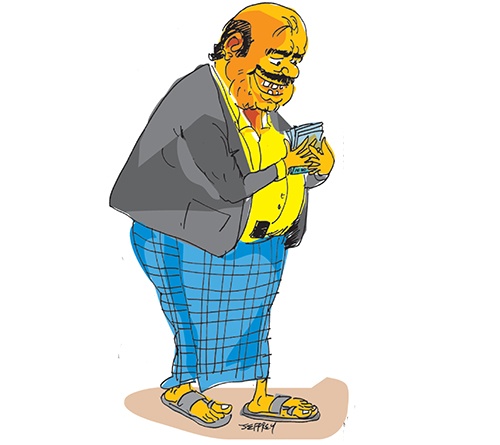
There was a fabulously rich mudalali, who, in his time, was an institution in the South. He was not born with the proverbial silver spoon in his mouth: He had to come up the hard way. The trials and tribulations of that upward struggle may have been the cause, but the man was so cussed that he generally opposed everything constructive or progressive. This cussed attitude of his prompted the villagers to call him ‘Haras’ Mudalali (Obstructionist).
But the mudalali didn’t always score off his fellow villagers. Once he had a house to let, and he had a board put up outside saying ‘TO LET’ in English. A few days later he found that some mischief-maker had inserted an ‘i’ between the two words, making it ‘TOILET’. What’s more, several vandals had used the house for the purpose.
Some sympathetic soul then suggested to the mudalali that he put up the board in Sinhala, and so a board with the words ‘Badhu Dheemata Thibay’ was put up. The next day, to his rage, mudalali discovered that the first letter had been erased, and the board now read ‘Dhu Dheemata Thibay’. (Daughter available for marriage).
Haras ran a tea room beside a very busy bus-stand, and next to his tea-room was another one run by a rival. The rival’s tea-room had no toilet, and to his rage Haras discovered that people who have tea at his rival’s tea-room, walk into his (Haras Mudalali’s) hotel to use his toilet. Haras promptly put up a board outside his tea-room, saying in pithy Sinhala, “The Fellow Who Drinks Tea At One Hotel and Pisses It Out At Another, Is A Shameless Bounder!”
Haras was very superstitious, and if he heard the sound of the gecko (hoona) when he was about to leave the house on some business however important the business was he would promptly put it off.
When they were broke some of his nephews would visit their uncle Haras. And, in order to avoid them, he would get dressed and pretending that he had some very important work to attend to and try to leave the house. As he comes into the varandah, one of the young rascals would make the sound of a gecko (Chik! Chik! Chik!) and the Haras would turn back and walk into the house!”
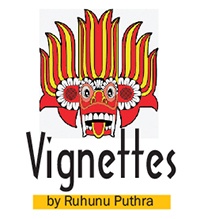 Haras would sit in his verandah so that he could observe any visitor coming his way long before the visitor could see him. This way, he could gauge why the visitor was coming, (the mudalali had an unerring sixth sense,) giving him time to prepare his strategy for putting the man off.
Haras would sit in his verandah so that he could observe any visitor coming his way long before the visitor could see him. This way, he could gauge why the visitor was coming, (the mudalali had an unerring sixth sense,) giving him time to prepare his strategy for putting the man off.
One day he saw a villager coming to see him, and from the agitated way the man was hurrying, Haras Mudalali’s instinct told him he was coming to borrow his (the Mudalali’s car)
When the visitor came within earshot, ‘Haras’, pretending not to see the man, called out loudly to his driver, ‘Ah, bung, Martiyo, isn’t the repair to the car done with yet?” And driver Martin, well-trained in these things, replied, “Not yet, mudalali, the repair will take another day or two.” The visitor, of course, departed, his request unvoiced.
One day Haras was told by his doctor that he had ‘sugar in his system’, and the first question the patient asked was whether there was enough of it to make his family self-sufficient in sugar!.
Haras had been receiving treatment from the local doctor for years for some apparently chronic ailment, the patient getting temporary relief every time, but with no signs at all of a permanent cure. One evening, the doctor who liked his little drop (and it certainly wasn’t medicine) dropped in at his club, looking most doleful and despondent. “I must have been tight like hell last night,” he groaned, clutching his head. For Haras Mudalali came to consult me, and I gave him the wrong medicine! “Good heavens!” said the others. “That’s a very serious matter.” “You are telling me,” groaned the doctor, again. “The bloody medicine is going to cure him!”
Haras reached his middle-age, a very rich man and a bachelor, and one day he decided that he was going to get married. But there was one hitch. In the time honoured fashion of mudalalis, Haras sported a ‘Konday’, his hair tied in a knot at the back of his head, and he knew no modern miss was going to marry a man with a ‘konday’. What to do? To cut it off would be to invite the derision and the ribald comments of his fellow villagers. Then he got a brainwave. The General Elections of 1947 were in the offing; he would contest a seat. He had no illusions about his popularity with his fellow men, and he took bets with anyone who was interested, that if he lost he would cut off his ‘konday’.
There was also another advantage in his contesting, for none of the other candidates, who were well-known to him, could ask him to lend them the numerous cars, vans and lorries he had, for their election work and to transport voters on polling day. (This was permitted then.)
Well, as everyone, including Haras himself expected he lost badly even losing his deposit. He had spent very little on his election campaign and he gained more than he lost. For not only did he save on the cost of petrol and the wear and tear of his vehicles had he lent them to others for their election work, but he also cut off his ‘Konday’. Haras wore the usual mudalali dress of coat and cloth, and he realised that he would have to change this too. So he thought much about how he could do it without inviting the ribald laughter of his fellow villagers. Then, one day, it dawned on him.
The Sinhala New Year was around the corner, and calling one of his catchers, a schoolmaster, Haras told him to set up a play for the entertainment of the village folk. “There must be a part for a trousered ‘mahattaya’ in the play?” Haras told the schoolmaster, “and I want to play that role.” The master came up with a play, with, a trousered character in it as a proctor’s clerk. Haras acted as the trousered proctor’s clerk, and wore trousers thereafter, causing very little comment. Later he married a girl with a fat dowry.
One day Haras’ wife timidly expressed a desire to go to Dambadiva (India) on a pilgrimage.
“Certainly, certainly, hamine,” said her husband cordially. “I shall make arrangements for it immediately.” He went to town and returned home with a large map of Asia. He spread the map on the dining table and called his wife. “Before going to Dambadiva, hamine, you must go to Kelaniya, Kandy, Mahiyangana, Anuradhapura, Dambulla, Mihintale, Polonnaruwa and Nagadeepa,” said Haras Mudalali.
Then taking his wife’s forefinger, he placed it on the map and said, “Here, hamine. This is Matara, where we are right now. From Matara, Sadhu! Sadhu!, we shall now go to Kelaniya.” And he guided his wife’s forefinger along the map. “There we are, hamine, we are at Kelaniya. Now let us go to Kandy. Here we are, at Kandy! Sadhu! Sadhu!. Next Mahiyangana! Now let us go to the eight holy places at Anuradhapura! Now Mihintale. Sadhu! Sadhu!. Next Dambulla!. And now Polonnaruwa! Sadhu! Sadhu! And now, hamine, the long journey to Nagadipa! Right! Now we cross the Palk Straits and go to Dambadiva! Here, hamine, now we are at Buddha Gaya! Sadhu! Sadhu! Next Saranath! Sadhu! Sadhu! Hamine now that we are in India, we might as well go to Kashmir, Benares, Bombay and New Delhi, the Mudalali added generously. “Now, hamine, you must be very tired. Go and rest a while, and in the evening shall take you to the holy places in Burma, Thailand, China and Japan!
Another day his wife told him that it was one of her dearest wishes to have on all night Pirith chanting ceremony at their home, followed by a Sanghika daana an alms–giving to monks. The next night there was an all-night pirith at Haras Mudalali’s house, by courtesy of his battered old gramophone and a set of pirith records he had borrowed. The following morning alms-giving was sent to the nearby temple, ten packets of rice and curry, packeted at the Mudalali’s hotel, with plantains for dessert.
Haras once solved a very delicate problem, very much the way some of our national problems are solved. Like many busy businessmen, Haras had hardly any time for his wife, who was considerably younger than him. Coming home unexpectedly one day, he found her in a compromising position on a priceless antique couch with his manager.
He pretended not to see the unedifying spectacle, but inwardly, he was filled with rage and humiliation at his wife’s infidelity and his manager’s treachery. He could not very well divorce his wife, for that would mean washing dirty linen in public, and he could not sack his manager for the blackguard knew all his business secrets, including the many ways he was defrauding the Inland Revenue Department. Then Haras got his brainwave. He sold the couch.
Haras’ younger son was very keen to play for the First Eleven of the prestigious school he was going to and turned up regularly for cricket practice. One day during practice, the seat of his trousers tore with a loud ‘baraas’ and from that day, he was called ‘Baraas’.
Despite his keenness, ‘Baraas’ was not selected for the team, he was twelfth man. Even then, playing for the First Eleven was a hell of a rat-race, with no holds barred. So Haras Mudalali began to send petitions to the authorities that one of the players was over-aged. This proved to be true, and the boy was dropped, and Haras’ son replaced him.
The manner of his entrance to the team made ‘Baraas’ very unpopular among the rest of the boys in the school, and when, at the big match, he got out first ball, the whole school shouted, “Adoo! Harasge putha Baraas BUROOS!”
One son of Haras was a very bright lad, whose one dream was to be a doctor one day. “What kind of doctor?” asked Haras.
“An Ear, Nose and Throat Specialist,” replied the boy.
“Don’t be a fool putha” – snorted Haras. “Two ears, one nose, and one throat are just four items. How much money can you make out of that? Become a dentist putha; You will have thirty two items to attend to!”
By the time the daughter of Haras was of marriageable age, he kept a sharp look out for a likely lad. One day he went to the Bank and saw a young man cashing a cheque for a large amount. When the cash was handed over to him by the cashier at the counter, the young man began to count the money, though the conventional thing was to nonchalantly pocket money, for bank cashiers were supposed to be infallible. And as the mudalali watched, with growing admiration, the young man counted the money no less than three times. When he was about to leave the bank, the mudalali went up to him and introduced himself and invited the young man home. The rest, of course, is history.
“One of his sons had married a girl from the wrong caste, much to Haras’ chagrin and wrath. He told his son that he was not to step into the old homestead ever again. After the passage of several months, hoping the old man had cooled down, the son visited his father with his bride. “Don’t step into my house,” yelled Haras. “Ho!” said his son with a defiant gesture, turning away. “My car, my petrol.” (Meaning: ‘I have the right to decide my own affairs’). “Very good,” replied Haras harshly. “Your car, your petrol, but no parking here.”
Haras was on his death-bed, and his six sons, who were running the old man’s flourishing building materials shop, were gathered round the dying man. One by one he called out their names (he had reconciled with his errant son), and they answered. “Yes, father, I’m here.”
When the youngest son answered, Haras sat up and shouted: “Yako, if all of you are here, who the devil is in the cashier-kooduwa?”
Sat Mag
October 13 at the Women’s T20 World Cup: Injury concerns for Australia ahead of blockbuster game vs India
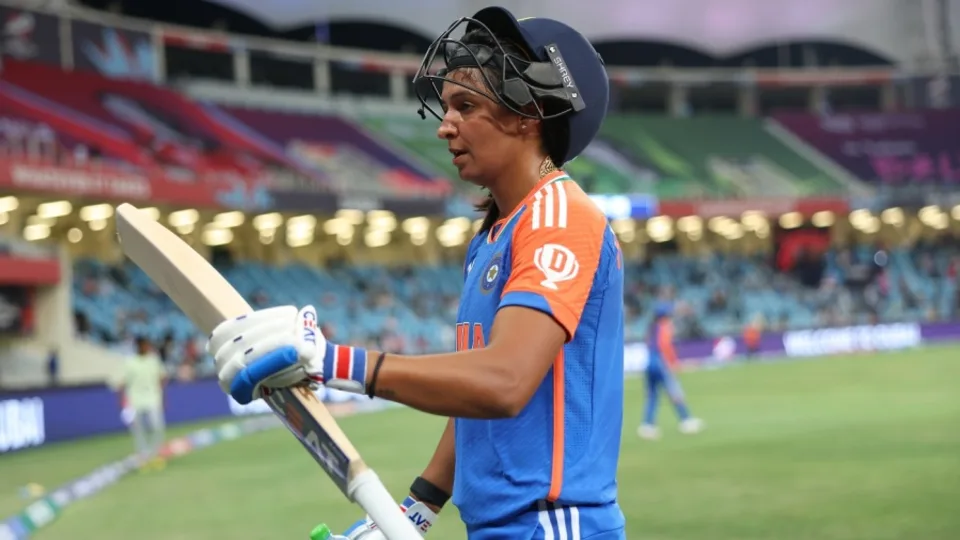
Australia vs India
Sharjah, 6pm local time
Australia have major injury concerns heading into the crucial clash. Just four balls into the match against Pakistan, Tayla Vlaeminck was out with a right shoulder dislocation. To make things worse, captain Alyssa Healy suffered an acute right foot injury while batting on 37 as she hobbled off the field with Australia needing 14 runs to win. Both players went for scans on Saturday.
India captain Harmanpreet Kaur who had hurt her neck in the match against Pakistan, turned up with a pain-relief patch on the right side of her neck during the Sri Lanka match. She also didn’t take the field during the chase. Fast bowler Pooja Vastrakar bowled full-tilt before the Sri Lanka game but didn’t play.
India will want a big win against Australia. If they win by more than 61 runs, they will move ahead of Australia, thereby automatically qualifying for the semi-final. In a case where India win by fewer than 60 runs, they will hope New Zealand win by a very small margin against Pakistan on Monday. For instance, if India make 150 against Australia and win by exactly 10 runs, New Zealand need to beat Pakistan by 28 runs defending 150 to go ahead of India’s NRR. If India lose to Australia by more than 17 runs while chasing a target of 151, then New Zealand’s NRR will be ahead of India, even if Pakistan beat New Zealand by just 1 run while defending 150.
Overall, India have won just eight out of 34 T20Is they’ve played against Australia. Two of those wins came in the group-stage games of previous T20 World Cups, in 2018 and 2020.
Australia squad:
Alyssa Healy (capt & wk), Darcie Brown, Ashleigh Gardner, Kim Garth, Grace Harris, Alana King, Phoebe Litchfield, Tahlia McGrath, Sophie Molineux, Beth Mooney, Ellyse Perry, Megan Schutt, Annabel Sutherland, Tayla Vlaeminck, Georgia Wareham
India squad:
Harmanpreet Kaur (capt), Smriti Mandhana (vice-capt), Yastika Bhatia (wk), Shafali Verma, Deepti Sharma, Jemimah Rodrigues, Richa Ghosh (wk), Pooja Vastrakar, Arundhati Reddy, Renuka Singh, D Hemalatha, Asha Sobhana, Radha Yadav, Shreyanka Patil, S Sajana
Tournament form guide:
Australia have three wins in three matches and are coming into this contest having comprehensively beaten Pakistan. With that win, they also all but sealed a semi-final spot thanks to their net run rate of 2.786. India have two wins in three games. In their previous match, they posted the highest total of the tournament so far – 172 for 3 and in return bundled Sri Lanka out for 90 to post their biggest win by runs at the T20 World Cup.
Players to watch:
Two of their best batters finding their form bodes well for India heading into the big game. Harmanpreet and Mandhana’s collaborative effort against Pakistan boosted India’s NRR with the semi-final race heating up. Mandhana, after a cautious start to her innings, changed gears and took on Sri Lanka’s spinners to make 50 off 38 balls. Harmanpreet, continuing from where she’d left against Pakistan, played a classic, hitting eight fours and a six on her way to a 27-ball 52. It was just what India needed to reinvigorate their T20 World Cup campaign.
[Cricinfo]
Sat Mag
Living building challenge

By Eng. Thushara Dissanayake
The primitive man lived in caves to get shelter from the weather. With the progression of human civilization, people wanted more sophisticated buildings to fulfill many other needs and were able to accomplish them with the help of advanced technologies. Security, privacy, storage, and living with comfort are the common requirements people expect today from residential buildings. In addition, different types of buildings are designed and constructed as public, commercial, industrial, and even cultural or religious with many advanced features and facilities to suit different requirements.
We are facing many environmental challenges today. The most severe of those is global warming which results in many negative impacts, like floods, droughts, strong winds, heatwaves, and sea level rise due to the melting of glaciers. We are experiencing many of those in addition to some local issues like environmental pollution. According to estimates buildings account for nearly 40% of all greenhouse gas emissions. In light of these issues, we have two options; we change or wait till the change comes to us. Waiting till the change come to us means that we do not care about our environment and as a result we would have to face disastrous consequences. Then how can we change in terms of building construction?
Before the green concept and green building practices come into play majority of buildings in Sri Lanka were designed and constructed just focusing on their intended functional requirements. Hence, it was much likely that the whole process of design, construction, and operation could have gone against nature unless done following specific regulations that would minimize negative environmental effects.
We can no longer proceed with the way we design our buildings which consumes a huge amount of material and non-renewable energy. We are very concerned about the food we eat and the things we consume. But we are not worrying about what is a building made of. If buildings are to become a part of our environment we have to design, build and operate them based on the same principles that govern the natural world. Eventually, it is not about the existence of the buildings, it is about us. In other words, our buildings should be a part of our natural environment.
The living building challenge is a remarkable design philosophy developed by American architect Jason F. McLennan the founder of the International Living Future Institute (ILFI). The International Living Future Institute is an environmental NGO committed to catalyzing the transformation toward communities that are socially just, culturally rich, and ecologically restorative. Accordingly, a living building must meet seven strict requirements, rather certifications, which are called the seven “petals” of the living building. They are Place, Water, Energy, Equity, Materials, Beauty, and Health & Happiness. Presently there are about 390 projects around the world that are being implemented according to Living Building certification guidelines. Let us see what these seven petals are.
Place
This is mainly about using the location wisely. Ample space is allocated to grow food. The location is easily accessible for pedestrians and those who use bicycles. The building maintains a healthy relationship with nature. The objective is to move away from commercial developments to eco-friendly developments where people can interact with nature.
Water
It is recommended to use potable water wisely, and manage stormwater and drainage. Hence, all the water needs are captured from precipitation or within the same system, where grey and black waters are purified on-site and reused.
Energy
Living buildings are energy efficient and produce renewable energy. They operate in a pollution-free manner without carbon emissions. They rely only on solar energy or any other renewable energy and hence there will be no energy bills.
Equity
What if a building can adhere to social values like equity and inclusiveness benefiting a wider community? Yes indeed, living buildings serve that end as well. The property blocks neither fresh air nor sunlight to other adjacent properties. In addition, the building does not block any natural water path and emits nothing harmful to its neighbors. On the human scale, the equity petal recognizes that developments should foster an equitable community regardless of an individual’s background, age, class, race, gender, or sexual orientation.
Materials
Materials are used without harming their sustainability. They are non-toxic and waste is minimized during the construction process. The hazardous materials traditionally used in building components like asbestos, PVC, cadmium, lead, mercury, and many others are avoided. In general, the living buildings will not consist of materials that could negatively impact human or ecological health.
Beauty
Our physical environments are not that friendly to us and sometimes seem to be inhumane. In contrast, a living building is biophilic (inspired by nature) with aesthetical designs that beautify the surrounding neighborhood. The beauty of nature is used to motivate people to protect and care for our environment by connecting people and nature.
Health & Happiness
The building has a good indoor and outdoor connection. It promotes the occupants’ physical and psychological health while causing no harm to the health issues of its neighbors. It consists of inviting stairways and is equipped with operable windows that provide ample natural daylight and ventilation. Indoor air quality is maintained at a satisfactory level and kitchen, bathrooms, and janitorial areas are provided with exhaust systems. Further, mechanisms placed in entrances prevent any materials carried inside from shoes.
The Bullitt Center building
Bullitt Center located in the middle of Seattle in the USA, is renowned as the world’s greenest commercial building and the first office building to earn Living Building certification. It is a six-story building with an area of 50,000 square feet. The area existed as a forest before the city was built. Hence, the Bullitt Center building has been designed to mimic the functions of a forest.
The energy needs of the building are purely powered by the solar system on the rooftop. Even though Seattle is relatively a cloudy city the Bullitt Center has been able to produce more energy than it needed becoming one of the “net positive” solar energy buildings in the world. The important point is that if a building is energy efficient only the area of the roof is sufficient to generate solar power to meet its energy requirement.
It is equipped with an automated window system that is able to control the inside temperature according to external weather conditions. In addition, a geothermal heat exchange system is available as the source of heating and cooling for the building. Heat pumps convey heat stored in the ground to warm the building in the winter. Similarly, heat from the building is conveyed into the ground during the summer.
The potable water needs of the building are achieved by treating rainwater. The grey water produced from the building is treated and re-used to feed rooftop gardens on the third floor. The black water doesn’t need a sewer connection as it is treated to a desirable level and sent to a nearby wetland while human biosolid is diverted to a composting system. Further, nearly two third of the rainwater collected from the roof is fed into the groundwater and the process resembles the hydrologic function of a forest.
It is encouraging to see that most of our large-scale buildings are designed and constructed incorporating green building concepts, which are mainly based on environmental sustainability. The living building challenge can be considered an extension of the green building concept. Amanda Sturgeon, the former CEO of the ILFI, has this to say in this regard. “Before we start a project trying to cram in every sustainable solution, why not take a step outside and just ask the question; what would nature do”?
Sat Mag
Something of a revolution: The LSSP’s “Great Betrayal” in retrospect
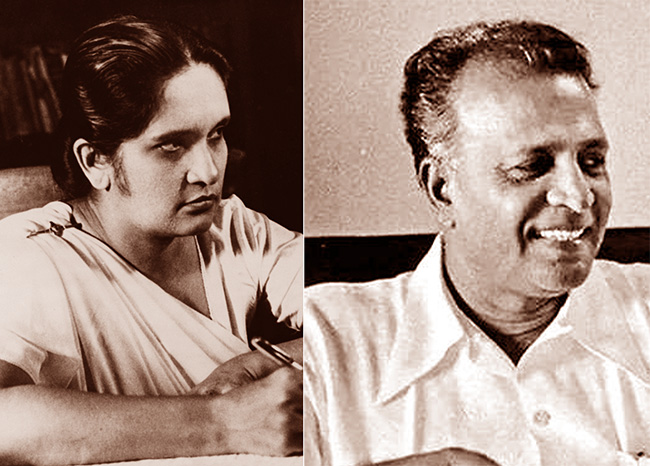
By Uditha Devapriya
On June 7, 1964, the Central Committee of the Lanka Sama Samaja Party convened a special conference at which three resolutions were presented. The first, moved by N. M. Perera, called for a coalition with the SLFP, inclusive of any ministerial portfolios. The second, led by the likes of Colvin R. de Silva, Leslie Goonewardena, and Bernard Soysa, advocated a line of critical support for the SLFP, but without entering into a coalition. The third, supported by the likes of Edmund Samarakkody and Bala Tampoe, rejected any form of compromise with the SLFP and argued that the LSSP should remain an independent party.
The conference was held a year after three parties – the LSSP, the Communist Party, and Philip Gunawardena’s Mahajana Eksath Peramuna – had founded a United Left Front. The ULF’s formation came in the wake of a spate of strikes against the Sirimavo Bandaranaike government. The previous year, the Ceylon Transport Board had waged a 17-day strike, and the harbour unions a 60-day strike. In 1963 a group of working-class organisations, calling itself the Joint Committee of Trade Unions, began mobilising itself. It soon came up with a common programme, and presented a list of 21 radical demands.
In response to these demands, Bandaranaike eventually supported a coalition arrangement with the left. In this she was opposed, not merely by the right-wing of her party, led by C. P. de Silva, but also those in left parties opposed to such an agreement, including Bala Tampoe and Edmund Samarakkody. Until then these parties had never seen the SLFP as a force to reckon with: Leslie Goonewardena, for instance, had characterised it as “a Centre Party with a programme of moderate reforms”, while Colvin R. de Silva had described it as “capitalist”, no different to the UNP and by default as bourgeois as the latter.
The LSSP’s decision to partner with the government had a great deal to do with its changing opinions about the SLFP. This, in turn, was influenced by developments abroad. In 1944, the Fourth International, which the LSSP had affiliated itself with in 1940 following its split with the Stalinist faction, appointed Michel Pablo as its International Secretary. After the end of the war, Pablo oversaw a shift in the Fourth International’s attitude to the Soviet states in Eastern Europe. More controversially, he began advocating a strategy of cooperation with mass organisations, regardless of their working-class or radical credentials.
Pablo argued that from an objective perspective, tensions between the US and the Soviet Union would lead to a “global civil war”, in which the Soviet Union would serve as a midwife for world socialist revolution. In such a situation the Fourth International would have to take sides. Here he advocated a strategy of entryism vis-à-vis Stalinist parties: since the conflict was between Stalinist and capitalist regimes, he reasoned, it made sense to see the former as allies. Such a strategy would, in his opinion, lead to “integration” into a mass movement, enabling the latter to rise to the level of a revolutionary movement.

Though controversial, Pablo’s line is best seen in the context of his times. The resurgence of capitalism after the war, and the boom in commodity prices, had a profound impact on the course of socialist politics in the Third World. The stunted nature of the bourgeoisie in these societies had forced left parties to look for alternatives. For a while, Trotsky had been their guide: in colonial and semi-colonial societies, he had noted, only the working class could be expected to see through a revolution. This entailed the establishment of workers’ states, but only those arising from a proletarian revolution: a proposition which, logically, excluded any compromise with non-radical “alternatives” to the bourgeoisie.
To be sure, the Pabloites did not waver in their support for workers’ states. However, they questioned whether such states could arise only from a proletarian revolution. For obvious reasons, their reasoning had great relevance for Trotskyite parties in the Third World. The LSSP’s response to them showed this well: while rejecting any alliance with Stalinist parties, the LSSP sympathised with the Pabloites’ advocacy of entryism, which involved a strategic orientation towards “reformist politics.” For the world’s oldest Trotskyite party, then going through a series of convulsions, ruptures, and splits, the prospect of entering the reformist path without abandoning its radical roots proved to be welcoming.
Writing in the left-wing journal Community in 1962, Hector Abhayavardhana noted some of the key concerns that the party had tried to resolve upon its formation. Abhayavardhana traced the LSSP’s origins to three developments: international communism, the freedom struggle in India, and local imperatives. The latter had dictated the LSSP’s manifesto in 1936, which included such demands as free school books and the use of Sinhala and Tamil in the law courts. Abhayavardhana suggested, correctly, that once these imperatives changed, so would the party’s focus, though within a revolutionary framework. These changes would be contingent on two important factors: the establishment of universal franchise in 1931, and the transfer of power to the local bourgeoisie in 1948.
Paradoxical as it may seem, the LSSP had entered the arena of radical politics through the ballot box. While leading the struggle outside parliament, it waged a struggle inside it also. This dual strategy collapsed when the colonial government proscribed the party and the D. S. Senanayake government disenfranchised plantation Tamils. Suffering two defeats in a row, the LSSP was forced to think of alternatives. That meant rethinking categories such as class, and grounding them in the concrete realities of the country.
This was more or less informed by the irrelevance of classical and orthodox Marxian analysis to the situation in Sri Lanka, specifically to its rural society: with a “vast amorphous mass of village inhabitants”, Abhayavardhana observed, there was no real basis in the country for a struggle “between rich owners and the rural poor.” To complicate matters further, reforms like the franchise and free education, which had aimed at the emancipation of the poor, had in fact driven them away from “revolutionary inclinations.” The result was the flowering of a powerful rural middle-class, which the LSSP, to its discomfort, found it could not mobilise as much as it had the urban workers and plantation Tamils.
Where else could the left turn to? The obvious answer was the rural peasantry. But the rural peasantry was in itself incapable of revolution, as Hector Abhayavardhana has noted only too clearly. While opposing the UNP’s Westernised veneer, it did not necessarily oppose the UNP’s overtures to Sinhalese nationalism. As historians like K. M. de Silva have observed, the leaders of the UNP did not see their Westernised ethos as an impediment to obtaining support from the rural masses. That, in part at least, was what motivated the Senanayake government to deprive Indian estate workers of their most fundamental rights, despite the existence of pro-minority legal safeguards in the Soulbury Constitution.
To say this is not to overlook the unique character of the Sri Lankan rural peasantry and petty bourgeoisie. Orthodox Marxists, not unjustifiably, characterise the latter as socially and politically conservative, tilting more often than not to the right. In Sri Lanka, this has frequently been the case: they voted for the UNP in 1948 and 1952, and voted en masse against the SLFP in 1977. Yet during these years they also tilted to the left, if not the centre-left: it was the petty bourgeoisie, after all, which rallied around the SLFP, and supported its more important reforms, such as the nationalisation of transport services.
One must, of course, be wary of pasting the radical tag on these measures and the classes that ostensibly stood for them. But if the Trotskyite critique of the bourgeoisie – that they were incapable of reform, even less revolution – holds valid, which it does, then the left in the former colonies of the Third World had no alternative but to look elsewhere and to be, as Abhayavardhana noted, “practical men” with regard to electoral politics. The limits within which they had to work in Sri Lanka meant that, in the face of changing dynamics, especially among the country’s middle-classes, they had to change their tactics too.
Meanwhile, in 1953, the Trotskyite critique of Pabloism culminated with the publication of an Open Letter by James Cannon, of the US Socialist Workers’ Party. Cannon criticised the Pabloite line, arguing that it advocated a policy of “complete submission.” The publication of the letter led to the withdrawal of the International Committee of the Fourth International from the International Secretariat. The latter, led by Pablo, continued to influence socialist parties in the Third World, advocating temporary alliances with petty bourgeois and centrist formations in the guise of opposing capitalist governments.
For the LSSP, this was a much-needed opening. Even as late as 1954, three years after S. W. R. D. Bandaranaike formed the SLFP, the LSSP continued to characterise the latter as the alternative bourgeois party in Ceylon. Yet this did not deter it from striking up no contest pacts with Bandaranaike at the 1956 election, a strategy that went back to November 1951, when the party requested the SLFP to hold a discussion about the possibility of eliminating contests in the following year’s elections. Though it extended critical support to the MEP government in 1956, the LSSP opposed the latter once it enacted emergency measures in 1957, mobilising trade union action for a period of three years.
At the 1960 election the LSSP contested separately, with the slogan “N. M. for P.M.” Though Sinhala nationalism no longer held sway as it had in 1956, the LSSP found itself reduced to a paltry 10 seats. It was against this backdrop that it began rethinking its strategy vis-à-vis the ruling party. At the throne speech in April 1960, Perera openly declared that his party would not stabilise the SLFP. But a month later, in May, he called a special conference, where he moved a resolution for a coalition with the party. As T. Perera has noted in his biography of Edmund Samarakkody, the response to the resolution unearthed two tendencies within the oppositionist camp: the “hardliners” who opposed any compromise with the SLFP, including Samarakkody, and the “waverers”, including Leslie Goonewardena.
These tendencies expressed themselves more clearly at the 1964 conference. While the first resolution by Perera called for a complete coalition, inclusive of Ministries, and the second rejected a coalition while extending critical support, the third rejected both tactics. The outcome of the conference showed which way these tendencies had blown since they first manifested four years earlier: Perera’s resolution obtained more than 500 votes, the second 75 votes, the third 25. What the anti-coalitionists saw as the “Great Betrayal” of the LSSP began here: in a volte-face from its earlier position, the LSSP now held the SLFP as a party of a radical petty bourgeoisie, capable of reform.
History has not been kind to the LSSP’s decision. From 1970 to 1977, a period of less than a decade, these strategies enabled it, as well as the Communist Party, to obtain a number of Ministries, as partners of a petty bourgeois establishment. This arrangement collapsed the moment the SLFP turned to the right and expelled the left from its ranks in 1975, in a move which culminated with the SLFP’s own dissolution two years later.
As the likes of Samarakkody and Meryl Fernando have noted, the SLFP needed the LSSP and Communist Party, rather than the other way around. In the face of mass protests and strikes in 1962, the SLFP had been on the verge of complete collapse. The anti-coalitionists in the LSSP, having established themselves as the LSSP-R, contended later on that the LSSP could have made use of this opportunity to topple the government.
Whether or not the LSSP could have done this, one can’t really tell. However, regardless of what the LSSP chose to do, it must be pointed out that these decades saw the formation of several regimes in the Third World which posed as alternatives to Stalinism and capitalism. Moreover, the LSSP’s decision enabled it to see through certain important reforms. These included Workers’ Councils. Critics of these measures can point out, as they have, that they could have been implemented by any other regime. But they weren’t. And therein lies the rub: for all its failings, and for a brief period at least, the LSSP-CP-SLFP coalition which won elections in 1970 saw through something of a revolution in the country.
The writer is an international relations analyst, researcher, and columnist based in Sri Lanka who can be reached at udakdev1@gmail.com
-

 Midweek Review1 day ago
Midweek Review1 day agoUnfolding AKD security strategy
-
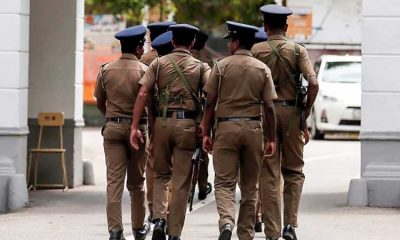
 News5 days ago
News5 days agoReshuffle of senior cops on the cards
-

 News4 days ago
News4 days agoLanka on alert as deadly HMPV outbreak spreads in China
-

 Editorial6 days ago
Editorial6 days agoBribe-gate and other unsolved plots
-

 Editorial5 days ago
Editorial5 days agoSaving children from corporate greed
-

 News3 days ago
News3 days agoProf. Udagama condemns Peradeniya Uni ban on IMF austerity programme lecture
-

 Editorial3 days ago
Editorial3 days agoDrivers from hell
-
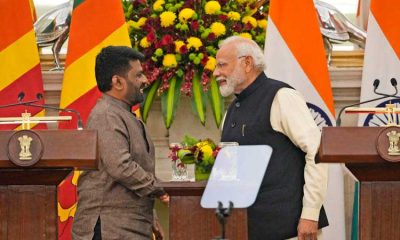
 Features6 days ago
Features6 days agoRating President’s visit to India











